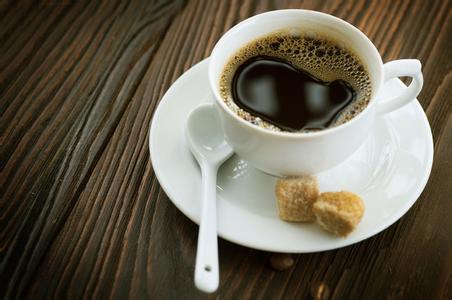Coffee bean producing countries introduce general knowledge of fine coffee

India
Coffee type: Arabica coffee, Robusta coffee
Yield: 4.600.000 bags
Indian coffee is produced in southern India. The biggest advantage is that coffee is dark, with moderate viscosity and acidity and special charming nuances. The biggest disadvantage is that it is less irritating. Coffee from the Shevaroysand region generally shows higher acidity than coffee from other parts of southern India.
Resurgence coffee (wet season maraba). A single-origin coffee typically dry-processed from southern India, susceptible to monsoon influences in open warehouses to increase viscosity and reduce acidity.
Incense sticks, Indian incense sticks. A market name for a special high-quality wet-processed Indian coffee grown in southern India.
Indonesia
Coffee type: Arabica coffee, Robusta coffee
Output: 6.700.000 bags
Indonesian coffee is very diverse in quality, always taking its market name from the island of origin, such as Sumatra, Sulawesi, Java or Timor. The advantage is that most coffees are characterized by strong, flavourful undertones and varying acidity. The downside is that they may exhibit unpleasant acrimony or a musty smell. Others display earthiness, a quality some coffee lovers like and others dislike.
Angola. Market name for arabica coffee from northern sumatra.
Sulawesi. Old name of Sulawesi. Most coffee comes from the Toraga or Karosi growing areas in the south-eastern highlands. The most famous coffees are known for their full viscosity, rich flavor and low profile, as well as lively acidity.
Calhoun Mountains. A market name for coffee exported from large processing centers and factories in Aceh province in northern Sumatra, wet processed coffee tends to be clean but generally inferior to Sumatra coffee in profile, traditionally processed coffee is similar to coffee in the Mantelin region of Sumatra: the advantages are that it shows exotic flavors and a low profile and lively viscosity.
Karosi. Planted area in the highlands of southeastern Sulawesi.
Unlike most other Indonesian coffees grown on very small farms for primary processing, Java coffee is grown on large farms or plantations, mostly run by the government, and wet processed using modern methods. Most exhibit the rich character of other Indonesian coffees, but are generally more viscous and acidic. . Old Java, Old Government, or Old Brown are coffee matured from Java, which mimics the characteristics of the original Java coffee, inadvertently preserving the characteristics of coffee originally carried by European fleets from the 18th and 19th centuries.
Lintong, Mantenin Lintong. The name of the most famous coffee market on the Indonesian island of Sumatra comes from the Toba Lake region in the north of the island.
Luwak, civet coffee. Coffee from Sumatra, Indonesia, is not known for its origin, but for the unique way it is processed. A mammal called a civet eats ripe coffee berries and digests and excretes seeds, which are removed from dried faeces or beans, making this coffee one of the most expensive in the world due to its small yield.
Sumatra Province. A coffee of single origin on the Indonesian island of Sumatra, most high-quality Sumatra coffee is grown near Lake Toba or near Lake Biwa in D.C. province.
Timor. . Timor (East and West) Coffee of a single origin, an early 20th century classic.
Toraja. Market name for coffee from southwestern Sulawesi.
Ivory Coast
Coffee Type: Robusta Coffee
Output: 2.500.000 bags
Ivory Coast is one of Africa's largest coffee producers. Coffee with rich flavor is especially popular among instant coffee producers who value excellent extraction rates.
Jamaica
Coffee Type: Arabica Coffee
Output: 40.000 bags
Jamaica Blue Mountain Coffee is or was a balanced classic coffee with rich flavor, saturated viscosity, smooth and lively acidity. These characteristics and its relatively small supply make it the most famous coffee in the world. Jamaica coffee grown in lower areas (Jamaica Highlands) tends to be low in acidity and viscosity. Other Jamaica coffees are undifferentiated.
Jamaica Blue Mountain style, different inventors mixed different coffees to get approximate Jamaica Blue Mountain coffee
Quality coffee blend. These blends may not include real Jamaica coffee.
Kenya
Coffee Type: Arabica Coffee
Output: 1.000.000 bags
Kenyan coffees resonate with their deep, alcoholic acidity and complex fruity and berry qualities. One of the greatest coffees in the world, Kenya coffee is probably the most consistent and widely consumed, grown on both small rural plots and large plantations.
The main growing area extends southward to the slopes of Mount Kenya to the capital Nairobi. There are also smaller coffee-growing areas on the slopes of Mount Elgon bordering Uganda.
Madagascar
Coffee type: Arabica coffee, Robusta coffee
Output: 700.000 bags
Madagascar produces coffee in many parts of the island, and the famous Kouillou variety produces coffee with a very distinctive flavor and high prices even in France.
Malawi
Coffee Type: Arabica Coffee
Output: 25.000 bags
Most Malawian coffee is grown on large tracts of land and is known for its soft, rounded outline.
Important Notice :
前街咖啡 FrontStreet Coffee has moved to new addredd:
FrontStreet Coffee Address: 315,Donghua East Road,GuangZhou
Tel:020 38364473
- Prev

Basic knowledge of high-quality coffee beans in coffee producing countries
Salvadoran Coffee Type: Arabica Coffee output: 1.300.000 bags of Salvadoran coffee has a milder, less sour classic Sino-American flavor profile. The best high-altitude Salvadoran coffee is obtained from bourbon and Parkmora coffee trees. This kind of coffee is fragrant, complex, lively and delightfully mild. Strict high altitude growth: Salvadoran coffee
- Next

Basic knowledge of fine coffee beans Coffee Bean producing countries
Mexican Coffee Type: Arabica Coffee production: 4.200.000 bags of Mexican coffee mostly from southern Mexico, the area is long and narrow and turns eastward. Veracruz produces most of the lowland coffee on the bay in the middle of the mountain, but the coffee is also known as Cottpe, which comes from a city near the mountain and has a good reputation. Other
Related
- Guji coffee producing area of Guji, Ethiopia: Humbela, Shakiso, Wulaga
- What is the most expensive variety of Qiloso in BOP multi-variety group?
- How to store the coffee beans bought home?
- Why are Yemeni coffee beans so rare now?
- Ethiopian Sidamo all Red Fruit Sun Sun Santa Vini Coffee beans
- SOE is mostly sour? What does it mean? Is it a single bean? what's the difference between it and Italian blending?
- Is Italian coffee beans suitable for making hand-brewed coffee?
- How to choose coffee beans when making cold coffee? What kind of coffee beans are suitable for making cold coffee?
- Just entered the pit to make coffee, what kind of coffee beans should be chosen?
- Can only Japan buy real Blue Mountain Coffee? What are authentic Jamaican Blue Mountain coffee beans?

